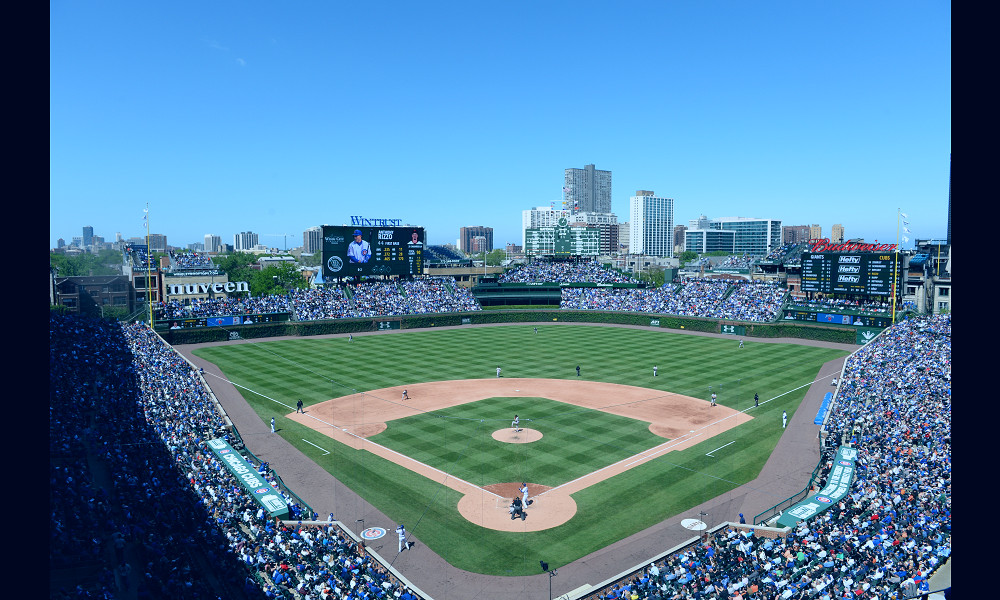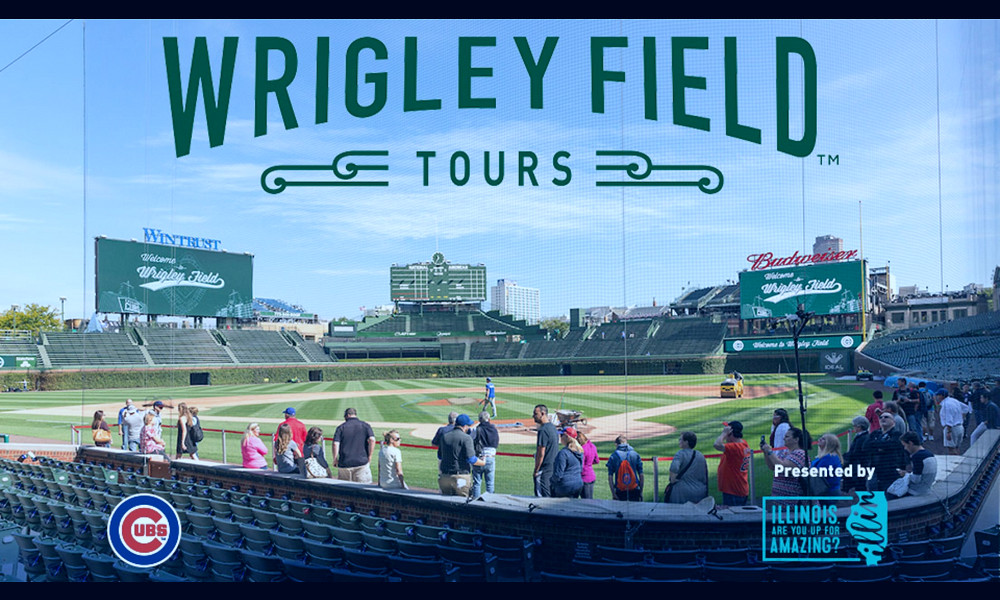
Experience the Magic of Baseball: Why Wrigley Field Should Be Your Next Destination
Wrigley Field, the iconic baseball park in Chicago, is not just a sports venue, but a symbol of American tradition and nostalgia. Home to the Chicago Cubs since 1916, its ivy-clad outfield wall, manually-operated scoreboard, and rooftop viewing stands embody the charm of yesteryears. Whether you're a die-hard baseball fan or simply a lover of history, a visit to Wrigley Field promises an unforgettable experience steeped in century-old stories and unforgettable sporting moments.
| Location | Chicago, Illinois, United States |
| Opened | April 23, 1914 |
| Owner | Chicago Cubs |
| Operator | Chicago Cubs |
| Surface | Natural grass |
| Capacity | 41,649 (night) ; 41,949 (day) |
| Field size | Left Field - 355 feet (108 m), Center Field - 400 feet (122 m), Right Field - 353 feet (108 m) |
| Suites | 85 |
| Record Attendance | 51,556 (June 27, 1930) |
| Field Name | Wrigley Field |
| Public transit | Addison (Red Line) |
| Architect | Zachary Taylor Davis |
| Tenants | Chicago Cubs (MLB, 1916–present) |
| Renovated | 1988, 2015-2019 |
| Former names | Weeghman Park (1914–1920), Cubs Park (1920–1926) |
| Dimensions | Left Field Line - 355 ft (108 m), Center Field - 400 ft (122 m), Right Field Line - 353 ft (108 m) |
| Scoreboard | Manual |
| Event Hosting | Baseball games, concerts, hockey games, football games. |
Historic Significance
Wrigley Field is one of the oldest baseball parks in the United States, having been built in 1914. It's an iconic symbol of America's favorite pastime and offers a unique, nostalgic experience that newer stadiums simply can't replicate. Read more
Unique Features
Unlike most modern stadiums, Wrigley Field still maintains many of its original features, including its famous ivy-covered walls and manual scoreboard. These elements add to the park's charm and give it a unique aesthetic that can't be found anywhere else. Read more
Location
Located in the heart of Chicago, Wrigley Field is surrounded by a vibrant neighborhood known as Wrigleyville. This area is filled with restaurants, bars, and shops, providing plenty of entertainment options before and after games. Read more
Cubs Tradition
As the home of the Chicago Cubs, Wrigley Field is steeped in tradition. From the singing of "Take Me Out to the Ballgame" during the seventh inning stretch to the flying of the "W" flag after a Cubs win, attending a game at Wrigley is a unique experience that every baseball fan should have. Read more

Fan Experience
The atmosphere at Wrigley Field is unmatched. The passionate Cubs fans, the historic surroundings, and the overall ambiance make every game an unforgettable experience. Read more
Excellent Views
Despite its age, Wrigley Field offers excellent sightlines from almost every seat in the house. Plus, its smaller size compared to newer stadiums provides a more intimate viewing experience. Read more
Accessibility
Wrigley Field is easily accessible by public transportation, including the Red Line train and several bus routes. This makes getting to and from the park a breeze, even for out-of-town visitors. Read more
Renovations
Despite its historic status, Wrigley Field has undergone several renovations in recent years to improve fan comfort and safety. These include updated restrooms, improved concession areas, and the addition of safety netting. Read more

Events Beyond Baseball
In addition to Cubs games, Wrigley Field also hosts concerts and other events, making it a versatile entertainment venue. Read more
Price
While tickets to a Cubs game can be pricey, the experience of watching a game at Wrigley Field is worth every penny. Plus, there are often deals and promotions that can make attending a game more affordable. Read more
Facts
1. A Century of History: Wrigley Field, the home of the Chicago Cubs, is a true piece of American history. This iconic baseball park, which first opened its doors in 1914, is one of the last remaining classic ballparks in the Major Leagues, offering a unique, vintage ambience that harks back to the early days of America's favorite pastime.2. The Ivy-Covered Walls: One of the most distinctive features of Wrigley Field is its ivy-covered outfield walls. Planted in 1937, the ivy not only adds a touch of greenery to the park, but also serves a practical purpose, providing a soft landing for outfielders chasing down fly balls.
3. The Birthplace of Night Games: Though Wrigley Field is steeped in tradition, it has also been a place of innovation. In 1988, it became the last Major League ballpark to install lights, paving the way for night games.
4. The Infamous Goat Curse: Wrigley Field is also known for the legendary Curse of the Billy Goat. The curse was supposedly placed on the Cubs in 1945 by a disgruntled fan who was asked to leave the park because his pet goat was disturbing other fans. The Cubs didn't win a World Series for 71 years after that incident.
5. Celebrity Seventh-Inning Stretch: Another unique tradition at Wrigley Field is the celebrity seventh-inning stretch. Started by broadcaster Harry Caray, a celebrity or notable figure leads the crowd in singing Take Me Out to the Ball Game during the seventh-inning stretch.
6. The Bleacher Bums: The outfield bleachers at Wrigley Field are home to the Bleacher Bums, a group of die-hard Cubs fans known for their raucous and enthusiastic support of the team. The Bleacher Bums have become a beloved part of the Wrigley Field experience.
7. The Wrigley Rooftops: Across the street from Wrigley Field, the rooftops of several buildings have been converted into unofficial seating areas, complete with bleachers and concession stands. These Wrigley Rooftops offer a unique vantage point for watching games.
8. The Wrigleyville Neighborhood: Wrigley Field is located in the neighborhood known as Wrigleyville, a vibrant area filled with bars, restaurants, and shops. The neighborhood is an integral part of the Wrigley Field experience, with many fans choosing to continue the celebration long after the game has ended.
9. The Friendly Confines: Wrigley Field is often referred to as The Friendly Confines, a nickname given to it by legendary Cubs player Ernie Banks. The moniker perfectly encapsulates the warm, welcoming atmosphere that greets fans at every game.
10. Preserving the Past: In 2007, Wrigley Field was designated a Chicago Landmark, ensuring that its history and character will be preserved for future generations of baseball fans to enjoy. The ballpark continues to be a beloved icon in the world of sports, a testament to its enduring appeal.
Read more
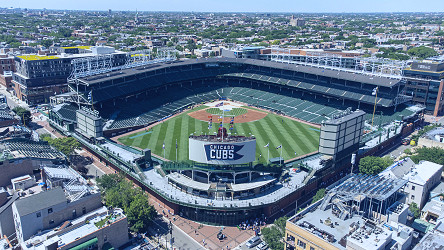 Wrigley Field - Wikipedia
Wrigley Field - Wikipedia Wrigley Field, Chicago Cubs ballpark - Ballparks of Baseball
Wrigley Field, Chicago Cubs ballpark - Ballparks of Baseball Wrigley Field: Home of the Cubs | Chicago Cubs
Wrigley Field: Home of the Cubs | Chicago Cubs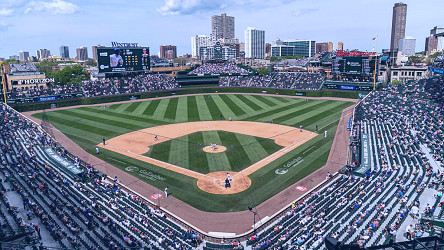 Wrigley Field opens to 60 percent capacity
Wrigley Field opens to 60 percent capacity Wrigley Field named a National Historic Landmark - Chicago Sun-Times
Wrigley Field named a National Historic Landmark - Chicago Sun-Times Wrigley Field: Home of the Cubs | Chicago Cubs
Wrigley Field: Home of the Cubs | Chicago Cubs Wrigley Field Designated as a National Historic Landmark | U.S. Department of the Interior
Wrigley Field Designated as a National Historic Landmark | U.S. Department of the Interior Wrigley Field (Chicago) – Society for American Baseball Research
Wrigley Field (Chicago) – Society for American Baseball Research The renovation of iconic Wrigley Field is an example of large-scale building recycling
The renovation of iconic Wrigley Field is an example of large-scale building recycling Where is Wrigley Field? | ParkMobile
Where is Wrigley Field? | ParkMobile Wrigley Field Stadium Wall Mural - Murals Your Way
Wrigley Field Stadium Wall Mural - Murals Your Way Wrigley Field (U.S. National Park Service)
Wrigley Field (U.S. National Park Service) 7 Facts about Wrigley Field | Wirtz Residential
7 Facts about Wrigley Field | Wirtz Residential Behind the Scenes Chicago's Wrigley Field | Midwest Living
Behind the Scenes Chicago's Wrigley Field | Midwest Living Wrigley Field upgrades one step away from realization – The Denver Post
Wrigley Field upgrades one step away from realization – The Denver Post Wrigley Field gates will open 90 minutes to game time in 2023 - Bleed Cubbie Blue
Wrigley Field gates will open 90 minutes to game time in 2023 - Bleed Cubbie Blue Wrigley Field: A local's guide to enjoying a road trip to the home of the Chicago Cubs
Wrigley Field: A local's guide to enjoying a road trip to the home of the Chicago Cubs Wrigley Field Tours: Seeing Cubs History Up Close
Wrigley Field Tours: Seeing Cubs History Up Close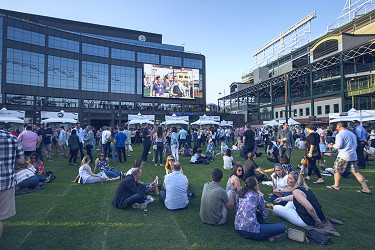 Gallagher Way at Wrigley Field | Find Chicago Venues, Parks & Concerts
Gallagher Way at Wrigley Field | Find Chicago Venues, Parks & Concerts Holy Cow! See Chicago's Wrigley Field skies erupt in color as storm clouds greet Cubs-Dodgers game
Holy Cow! See Chicago's Wrigley Field skies erupt in color as storm clouds greet Cubs-Dodgers game 









